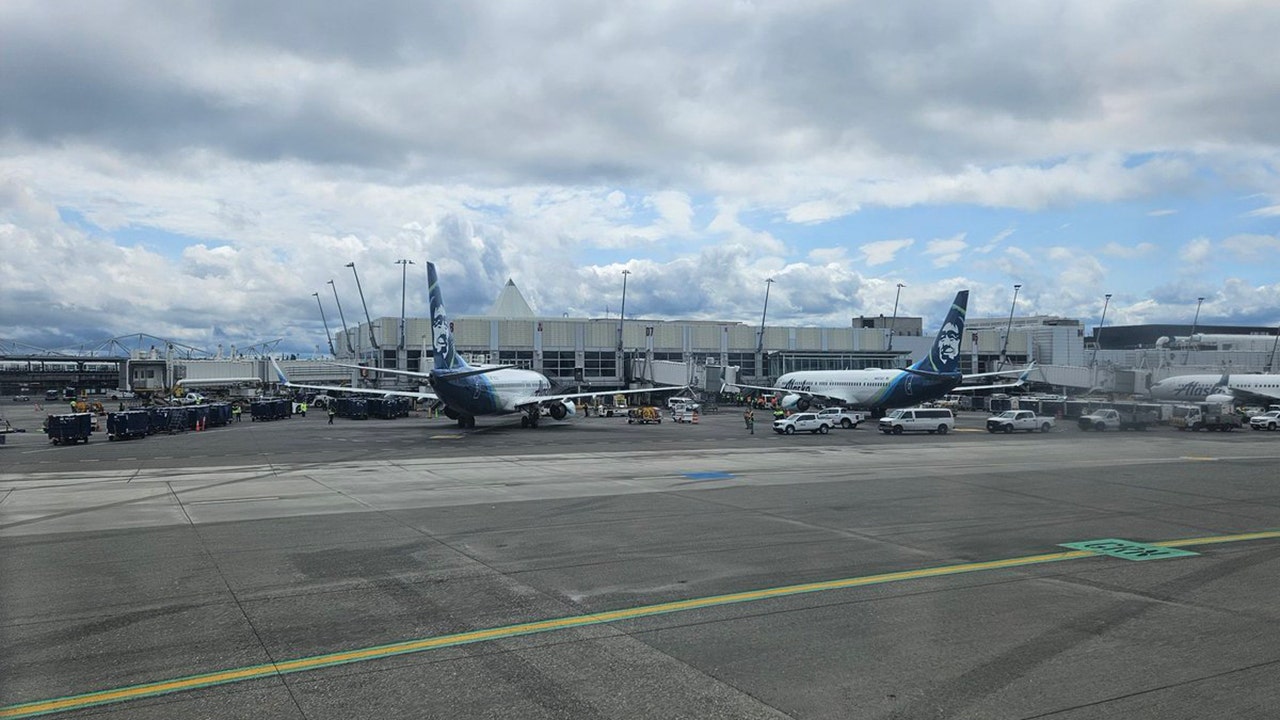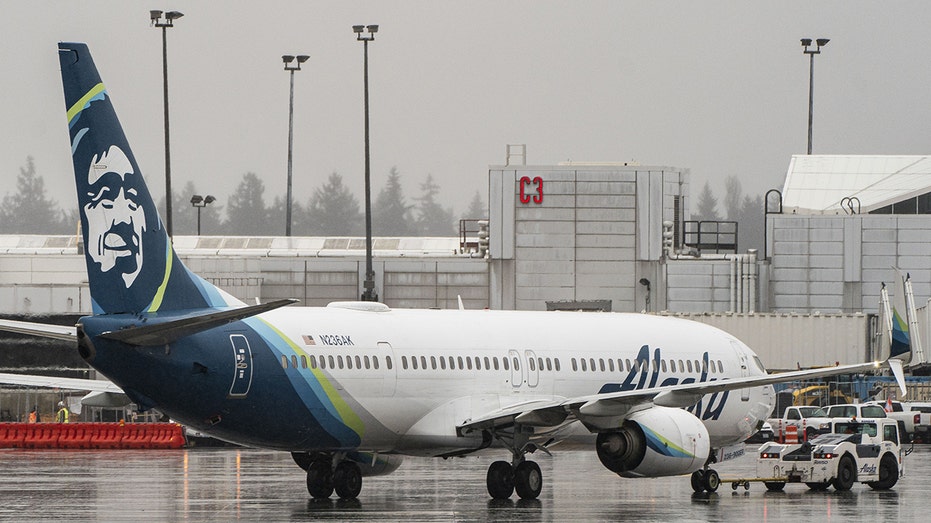Alaska
Discover the UnTamed Beauty of Alaska with UnCruise Adventures

Sponsored by Uncruise Adventures
The first hint of Alaska’s pull on you isn’t just the mountains or the sheer, blue-gray glaciers; it’s the smell of pine carried on the crisp air, mingling with the hope of seawater. It’s the quiet you feel, the kind that settles in when you’re miles from anywhere and closer than ever to the rugged, boundless wilderness that calls out from each and every direction. Alaska’s landscape has a way of drawing you in, unearthing a wildness within that seems to mirror the towering peaks, endless forests, and hidden, untouched bays.
It’s here, away from the hum of large ports and well-worn tourist trails, that UnCruise Adventures shows you a different Alaska, the real Alaska. It’s not a trip filled with half-glances from a ship’s deck but an immersive encounter. With UnCruise Adventures, you’re stepping into the Alaska of hidden fjords and protected coves, where life thrives and the landscape remains as it has been for centuries. This is the true Alaska, where each journey tells a story of its own, woven from the land and the wildlife (both miniscule and giant) that inhabit it.
Imagine spending two days in the untouched wonder of Glacier Bay National Park, surrounded by towering glaciers and wildlife like seals and eagles. Or picture yourself on the Northern Passages route, where intimate encounters with humpback whales, sea otters, and brown bears are part of the day. Above all, the UnCruise experience is crafted to be a close, sustainable journey that puts the utmost respect in nature and immerses guests in the landscape, culture, and wildlife.
With over 25 years of expertise, UnCruise Adventures’ expeditions remain at the forefront of immersive, small-ship travel. Launching with a single ship exploring Alaska, UnCruise now operates the longest cruise season in Alaska, and while its offerings have since expanded, the mission remains to deliver transformative experiences. Now more than ever, that mission aligns with eco-conscious travel. From navigating the lesser-known Aleutian Islands to following viewing guidelines for wildlife protection, UnCruise’s small ships allow for sustainable exploration in places larger vessels can’t reach. Travelers come away not just with stories but with a renewed appreciation for conservation.
UnCruise’s small-group, small-ship model is crucial to its unique approach. With capacities between 22 and 86 guests, these vessels venture into coves, fjords, and back channels beyond the reach of traditional cruises, ensuring an Alaska experience that’s exclusive, personal, and respectful of the environment. This model also opens up rare privileges—such as setting foot in Glacier Bay, where less than one percent of visitors ever tread. Guests watch from ridge hikes along glaciers as some of the big foreign ships pass by and don’t stop.
Alaska is more than just vast landscapes; it’s a world where natural beauty meets rich cultural heritage. Through partnerships with local communities, UnCruise offers insights into the lives of Alaskan natives like the Tlingit people. The Tlingit share their centuries-old traditions through guided village visits, storytelling, and unique customs. It’s a chance for guests to connect on a cultural level with Alaska, understanding the heritage through the eyes of the people who have lived here for generations.
Beyond the exhilarating days, UnCruise offers an all-inclusive experience that’s tailored to each guest’s desires. This means unlimited adventures and unlimited amenities—from gourmet meals crafted with local ingredients to drinks included in the fare. Every detail is thoughtfully arranged to allow guests to immerse themselves fully. After a day spent exploring, guests return to a welcoming onboard experience where they can enjoy a signature daily cocktail, freshly baked cookies, a hearty meal, story swapping, lectures, and the thrill of preparing for the next day’s adventure.
Dining on UnCruise’s Alaska journeys is a highlight in itself. The onboard chef and pastry chef prioritize locally sourced and sustainable ingredients, creating dishes that bring Alaskan flavors directly to your plate. Each day begins with breakfast, is followed by lunches and multi-course dinners, and includes snacks in between, so guests never go hungry. And with an extensive selection of wines, craft beers, and cocktails, the beverages are just as thoughtfully curated (did we mention this is all included?).
Expert guides, well-versed in Alaska’s natural and cultural history, work to tailor each day’s activities based on guest preferences. Whether it’s kayaking through the calm waters of Endicott Arm, snorkeling in cold yet crystal-clear fjords, or going for a hike high above a glacier, the choice is yours and dependent on what level of physical activity you are most comfortable with. The guides make sure each exploration has a personalized touch as they offer insights, assistance, and flexibility that let you make the most of each day.
From Alaska’s vast, icy waters to its remote forest trails, every experience on UnCruise is about pushing the boundaries of exploration. Travelers are encouraged to immerse themselves fully, whether that’s through hands-on encounters like glacier hikes or simply enjoying the peaceful rhythm of Alaska from the deck. For those who dream of snorkeling, diving, kayaking, and paddleboarding, UnCruise provides all the gear you’ll need, ensuring safe, convenient access to these thrilling experiences.
At UnCruise Adventures, Alaska’s natural beauty and cultural richness are respected, cherished, and preserved. This is not your typical Alaska cruise; it’s a journey where each detail is considered, every adventure is included, and every traveler is a part of the story. As Alaska’s landscapes stretch before you, you’re not just an observer—you’re part of something bigger.
For more about Uncruise Adventures, visit their website at Uncruise.com and follow along on their social channels.
Facebook
Instagram
YouTube
Twitter

Alaska
Alaska Airlines planes clip wings at Seattle-Tacoma airport, prompting FAA probe

Fox News senior congressional correspondent Chad Pergram has the latest on aircraft travel issues on ‘The Bottom Line.’
The Federal Aviation Administration (FAA) is investigating after two Alaska Airlines planes clipped wings at a Seattle-Tacoma International Airport gate Saturday.
At about 12:15 p.m. local time, ground-service tugs were pushing back two aircraft from their gates when their winglets touched, an Alaska Airlines spokesperson told FOX Business.

Alaska Airlines flights 1190 and 1094 clipped wings Saturday. (LunatikMedic/Erik Luna / Fox News)
TRUMP CONTINUES TO DEFEND QATAR GIFTING US $400M JET: ‘WE SHOULD HAVE THE MOST IMPRESSIVE PLANE’
There were no injuries, the spokesperson said.
Passengers on the two flights deplaned at the gate, were transferred to other aircraft and departed a short time later.

An Alaska Airlines Boeing 737-900ER aircraft on the tarmac at Seattle-Tacoma International Airport in Seattle. (David Ryder/Bloomberg via Getty Images / Getty Images)
MAJOR AIRLINE MAKES BIG CHANGE TO EASE TRAVEL WOES AMID CHAOS AT NEWARK AIRPORT
“We sincerely apologize to our guests for the delay and inconvenience,” an Alaska Airlines spokesperson said.
| Ticker | Security | Last | Change | Change % |
|---|---|---|---|---|
| ALK | ALASKA AIR GROUP INC. | 53.65 | +0.67 | +1.26% |

The FAA said it is investigating the Alaska Airlines incident. (Kevin Carter/Getty Images / FOXBusiness)
GET FOX BUSINESS ON THE GO BY CLICKING HERE
FAA air traffic control is not responsible for plane movements in the gate area, the agency wrote in a news release.
Alaska
As Alaska warms, Arctic geese are skipping their southern migration

Out on Izembek Lagoon, the water was flat and clear. Alison Williams, a biologist with the U.S. Fish & Wildlife Service, dipped her paddle in and steered her kayak toward the center of the lagoon, where the seagrass below runs thick.
“Everything below us is eelgrass,” she said. “It actually evolved on land and then evolved to go back into the water.”
The lagoon is the heart of the Izembek National Wildlife Refuge, a wide expanse of tundra and small lakes that stretches 310,000 acres across the Alaska peninsula, between the Pacific Ocean and the Bering Sea. It’s the smallest federal wildlife refuge in Alaska but one of the most important. It’s home to hundreds of thousands of birds: Pacific black brant, emperor geese, pintails and eiders.
This time of year, Izembek is famous as a stopover for migrating birds — a place to rest and refuel as hundreds of species move between their southern wintering grounds and the Arctic.
Refuge manager Maria Fossado underscores how central this place is for migration.
“Wildlife are very smart, and they like to capitalize on use of energy,” she said. “Their focus is feeding, resting and capitalizing on when food is available.”
Theo Greenly / KSDP
/
KSDP
As the Arctic warms, some birds, like the Pacific black brant, are cutting their migrations short and spending the winter at the refuge. Williams says declining sea ice has made it easier to find the resources they need.
“It used to be, in the ’80s, a couple thousand. Increasingly, more of them are staying all winter long. Fifty to sixty thousand — the thought is, the lagoon is freezing over less, we’re getting less ice, and so the brant can access the eelgrass,” she said.
The lagoon is Izembek’s crown jewel. It hosts one of the largest eelgrass beds in the world. So why fly 2,800 miles to winter in Mexico when it’s plenty warm here?
“It might freeze up and then melt a couple times during the winter now, which is part of why people think that the brant are staying over more during the winter,” Williams said.
But overwintering has its costs. Brant don’t have to fly as far — but surviving an Alaska winter takes more energy than it does in a warmer place. Williams calls it a game of trade-offs.
A study published in March the journal Movement Ecology looked at brant over a 10-year period. It found the benefits mostly cancel out: the energy saved on the commute is about the same as the energy spent making it through the colder winters.

Theo Greenly / KSDP
/
KSDP
A fragile habitat holds on — for now
Beneath Williams’ kayak, there was a sprawling underwater meadow — the eelgrass beds that fuel the entire ecosystem.
“There’s a lot of things that live in the eelgrass,” Williams added. “It’s good habitat for a huge array of things.”
Tiny snails and clams burrow into it. Fish shelter inside it. And birds like the black brant depend on it for the energy to migrate — or overwinter.
The U.S. Geological Survey surveyed the eelgrass cover at Izembek in 2016 and 2020.
“There was some loss of eelgrass in the central part of the lagoon, where we are now,” Williams said. “And then a couple areas where we actually gained a little bit.”
Overall, the survey found a slight decline — far less than the global average. Worldwide, scientists estimate that about 30% of eelgrass habitat has vanished, hit hard by warming waters, pollution and invasive species.
Izembek remains one of the largest intact strongholds for this vital ecosystem. But in a warming world, even the most remote places are changing.
Alaska
Amid budget struggle, Alaska has little money for new construction or renovation

The Alaska House of Representatives, following in the path of the state Senate, has approved a small construction and renovation budget for the fiscal year that starts July 1.
The vote on Senate Bill 57, the annual infrastructure bill — formally known as the capital budget — was 21-19, along caucus lines.
When oil prices and production are high, the Alaska Legislature pours hundreds of millions of dollars into new construction and maintenance projects. This spring, with the Legislature anticipating low oil prices and reduced federal funding, the House version of the capital budget proposes to spend just $167.9 million in general-purpose dollars.
In comparison, the capital budget two years ago spent more than three-quarters of a billion dollars. The newly approved capital budget isn’t the smallest in recent history — in 2016, legislators approved just $107 million — but spending is very limited by historical standards, noted Rep. Calvin Schrage, I-Anchorage, who oversaw the budget on the House Finance Committee.
“This was not a fun or easy year to be the capital budget co-chair,” Schrage said, “due to our state’s dire fiscal picture. We had to say no — or at least not now — to a lot of good projects that would have benefited Alaskans. That said, we were still able to make some meaningful investments.”
A significant amount of the capital budget is being set aside for matching funds needed to unlock federal grants. For example, it allocates $57.2 million in general-purpose money to the Alaska Department of Transportation and Public Facilities, which gives the state access to more than $2 billion in transportation funding once federal money is considered.
It isn’t yet clear how federal budget cuts will affect that figure. The budget is set based on what is known as of today.
With general-purpose revenue limited, the House and Senate finance committees were mostly limited to assigning money to deferred maintenance projects at state facilities spread across Alaska.
For example, the Senate added $19 million to the major maintenance list at public schools. The House added another $19 million on top of that, enough to cover the top nine projects on the list.
“We basically had an agreement going in; we got half, they got half,” said Sen. Bert Stedman, R-Sitka and Senate Finance Committee co-chair.
When it came to discretionary funding, requests from individual legislators for things like playgrounds or streetlights, the House and Senate were again treated equally.
“Everybody got nothing,” Stedman said.
Budget documents show few exceptions to Stedman’s comment.
One of the few budget additions made by the House was $500,000 for a Blood Bank of Alaska testing lab. Gov. Mike Dunleavy requested the money, the Senate rejected it, but the House added it back in.
In many places, the budget attempted to use other sources of money instead of general-purpose dollars that primarily come from Permanent Fund earnings, oil taxes and royalties.
For example, Dunleavy requested $7 million for a time and attendance system to be used by state employees. The Senate cut that request to $4 million, and instead of using general-purpose dollars, lawmakers took additional money from the accounts of the Alaska Industrial Development and Export Authority. The House approved that change.
Of the budget overall, Schrage said lawmakers tried to deny projects equally, without regard to party or district.
“I know that this won’t make everyone happy, but we’ve done the best that we can,” he said.
The budget will return to the Senate for a concurrence vote, then advance to Dunleavy, who has line-item veto power and may eliminate individual budget items but cannot add new ones.
Originally published by the Alaska Beacon, an independent, nonpartisan news organization that covers Alaska state government.
-

 Austin, TX1 week ago
Austin, TX1 week agoBest Austin Salads – 15 Food Places For Good Greens!
-

 Technology1 week ago
Technology1 week agoNetflix is removing Black Mirror: Bandersnatch
-

 World1 week ago
World1 week agoThe Take: Can India and Pakistan avoid a fourth war over Kashmir?
-

 News1 week ago
News1 week agoReincarnated by A.I., Arizona Man Forgives His Killer at Sentencing
-

 News1 week ago
News1 week agoWho is the new Pope Leo XIV and what are his views?
-

 News1 week ago
News1 week agoEfforts Grow to Thwart mRNA Therapies as RFK Jr. Pushes Vaccine Wariness
-

 Politics1 week ago
Politics1 week agoDepartment of Justice opens criminal investigation into NY AG Letitia James
-

 World1 week ago
World1 week agoNew German chancellor aims for stronger EU ties with France and Poland















